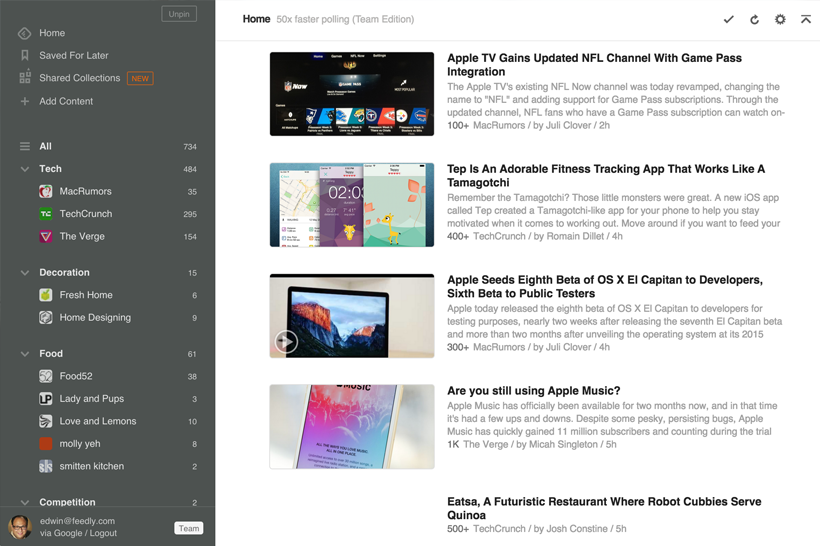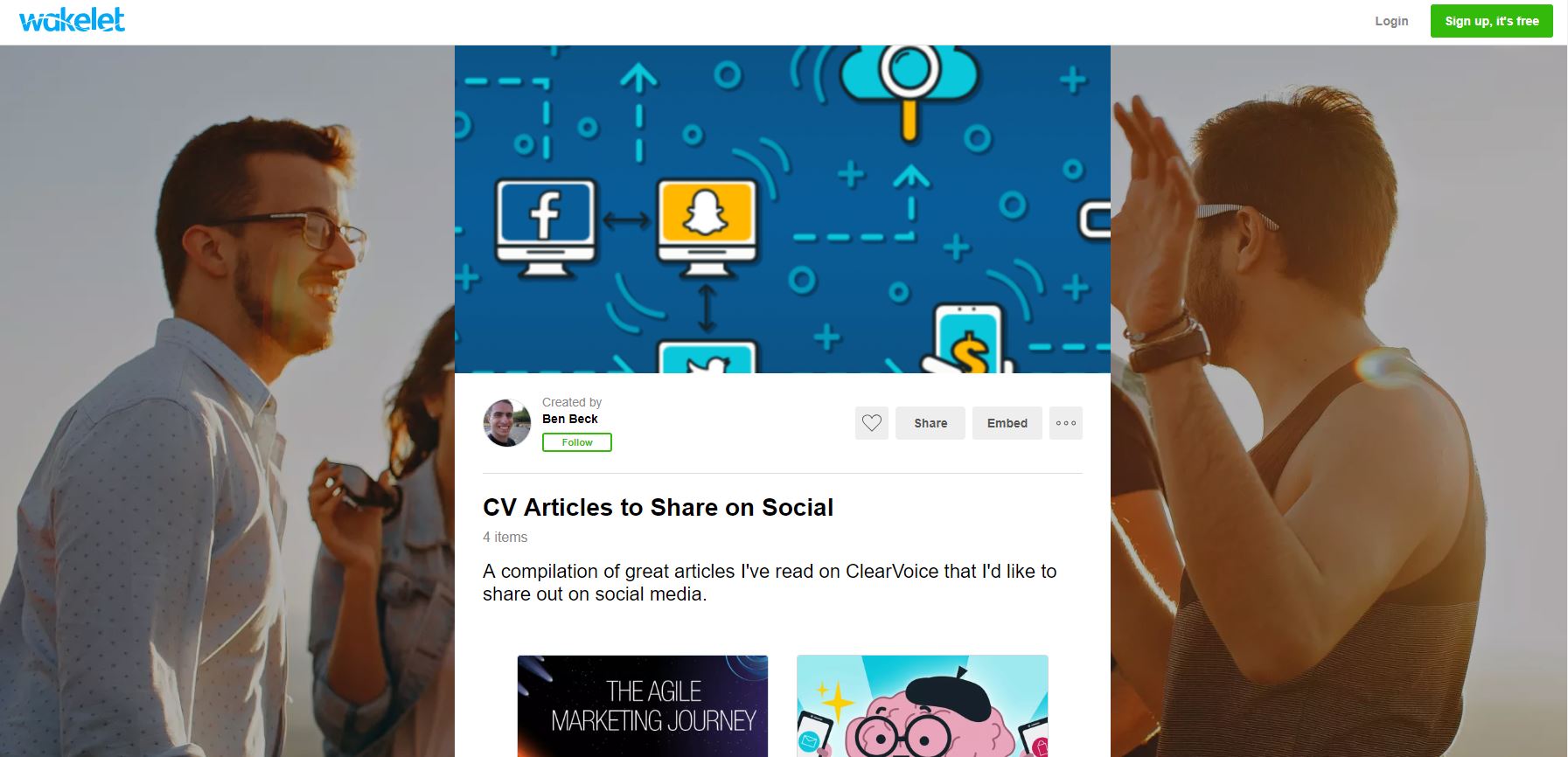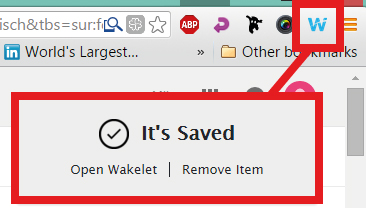Content curation tools help marketers aggregate, filter, organize and share relevant content from around the web. Businesses rely on these solutions to make content marketing efforts more efficient and productive. Some tools offer an all-in-one option while others specialize in one or two areas of curation.
While I still consider myself a young marketer with less than 11 years under the belt, we’ve seen this travesty time and time again: companies spending countless dollars and dozens (or hundreds) of internal man-hours to create a website, only to find that they won’t get a significant amount of site traffic.
The problem?
A lack of compelling content.
Without compelling content, your website, blog, or other online publication is useless. You must have relevant, interesting, well-written content in order to draw readers. The better the content, the more people will read it and share it; and as a result, you’ll get more attention for your website, your business and your products.
However, not many businesses are creating this content that is shareworthy. In fact, in the B2B Content Marketing Benchmarks and Trends guide, published by the Content Marketing Institute, only 32 percent of business marketers consider their content marketing maturity level as sophisticated or mature.
This lack of content marketing sophistication is where content curation tools come into play.
The internet is glutted with content right now — and it takes so long to personally comb through it and find pieces that are worth posting on your blog or site. What if there were services that could find, curate, or save the available content for you? Systems like Feedly, Pocket, and Wakelet can do just that, with varying degrees of success. Find out how these content curation tools could help you share better content and attract more readers.
Feedly
Feedly tracks blogs that offer content via Real Simple Syndication (RSS). It delivers that content to your computer, tablet or phone, where you can see the updates and decide what you want to read.
Feedly pros
- Keyword alerts: Feedly allows you to keep an eye on any news related to your products and your business. You can also monitor news items about your competitors, changes in your field or market, and innovations that affect your company.
- Easy organization: Rather than overwhelming you with giant streams of content, Feedly organizes the content for you. You can create manageable, accessible collections to sort your stories for future use.
- Different views: You’ll enjoy browsing your categories thanks to a clean, fresh-looking interface that helps you focus and avoid distractions. Choose from three different display formats (Title Only, Magazine, or Cards) depending on how much of the article you want to glimpse as you’re scrolling through. Too much on your plate? Save the content you’re interested in so you can read it later.
Feedly cons
- Format change for alternate RSS reader feeds: If you have feeds from different RSS reader applications, you’ll have to do a tricky export/import switch in order to add them to Feedly as your preferred content curation source. Change the feeds to OPML format, then import those items to Feedly.
- Hard to read on mobile: The articles and content you draw from Feedly can be tough to read on a standard smartphone screen. You may have to use a tablet, upgrade to a phone with a larger screen size, or simply get used to zooming in as you read.
- Some features not free: Although much of Feedly is usable for free, there are a number of helpful features that are only available with the paid Pro version. At the rate of $45 per year, it’s a reasonable investment to gain more sharing options, Dropbox integration, advanced search, faster fetching, and custom sharing.
Who should use this tool
Anyone who likes to see the latest news and blog posts in easy, manageable bites will enjoy Feedly, especially since the content can be tagged, emailed, shared, or saved for reading later. It’s a quick way to gain some relevant content for your channel of choice, whether it’s your company blog, Facebook page, or Twitter feed.
Pocket serves as a digital space for stashing content that you’d like to read or use later.
Pocket pros
- Always available: Once you place a piece of content in Pocket, it’s saved to all your devices, including your phone, computer, or tablet. You don’t need an Internet connection to access the content and read it.
- Batch save option: What if you find a page with several articles that you want to save? With the “Batch Save” Chrome extension of Pocket, you can save and tag a number of links at once.
- Compatibility: Pocket works beautifully with Evernote, enabling you to go paper-free and effectively streamline the digital content clutter in your life. There’s even a guide for using Pocket and Evernote together — Pocket for articles you want to check again soon and Evernote for long-term storage of interesting content. It’s also integrated with over 1,500 other applications.
Pocket cons
- Limited usefulness: Although Pocket is helpful as a place to save content, it lacks a number of features that other content curation solutions offer. Pocket doesn’t go and find content for you or keep track of topics related to your life and business. It’s up to you to find those pieces of news.
- No organizational tools: While Feedly allows you to organize content into collections, Pocket only provides tagging as a method for sorting your saved content.
- Space constraints: The more items you save to Pocket, the more space it eats up — not just on one device, but on every device you have linked. You’ll definitely want to set up offline storage limits, especially if you save large amounts of content or you may run out of storage space on your smartphone or tablet.
- Ads in the free version: To keep Pocket free, the tool runs various sponsored ads. You can upgrade to the tune of $44.99 per year to enjoy ad-free use of Pocket, advanced topic search, and Suggested Tags.
Who should use this tool?
If you prefer to find interesting content yourself rather than having a content curation tool do it for you, you may enjoy the simple service that Pocket offers. It’s a place to keep and tag lots of articles, blogs, and links that you may need soon, and in that capacity, it works well.
Wakelet
The newest of the three content curation tools highlighted here, Wakelet is making a splash with a few unique key differentiators, such as taking collected content and beautifully laying it out in a portfolio style or the ability to import Storify stories (which is super helpful as the Storify platform will be shut down May 2018).
Wakelet pros
- Quick content collection: Have you found an interesting bit of information or a hot story? Do you have breaking news from your business or a new product to showcase? Similar to Pocket and Feedly, with Wakelet, you have an easy-to-use Chrome plugin that allows you to quickly save content you come across on the web as your own “Wake” in your Wakelet account.
- Beautiful public layouts: Unique to Wakelet is the ability to take your collections of data, easily lay it out in an attractive format, and share it with the public. Here you can see a publicly viewable version of one of my Wakes where I track Clearvoice articles I want to share on social media.
- Teamwork contributions: One feature that made Storify stand out was the ability for multiple people to edit, review, update, or publish stories. Wakelet takes it a step further, as people that you’ve pre-approved can contribute content that is auto-dropped into your attractive, public-facing “social newsroom.”
- Unsplash integration: For your publicly shared Wakes, Wakelet allows you to upload your own picture for the background, or you can import one straight from Unsplash. Unsplash has some of the best, royalty-free photos that are available out there, and you can add them to your Wake backgrounds with one click.
Wakelet cons
- Light functionality: Compared to its older brother, Storify, Wakelet is still in a fledgling state of development. What it does, it does beautifully, but it doesn’t have all the functionality that Storify did. As such, while you migrate your Storify content over and begin to use Wakelet you’ll need to be patient as it continues to build out functionality.
- Trusting your collection to a third party: This con is, admittedly, somewhat of a stretch. Wakelet is a fantastic tool… but as we saw with Storify, can you trust your collections and public-facing social newsrooms to a third party?
Who should use this tool?
If you’re interested in collecting content easily and then laying it out in an attractive manner that can be shared publicly, Wakelet is the tool for you.
Finding your Content Curation Tools
Still not sure if these tools are right for you? Take a few weeks to experiment with them and figure out which ones might save you time. Look for a content curation tool that enables you to stay well-informed while you keep your company’s content fresh and up to date. Connect with a content strategist to begin talking about your content goals and needs.







